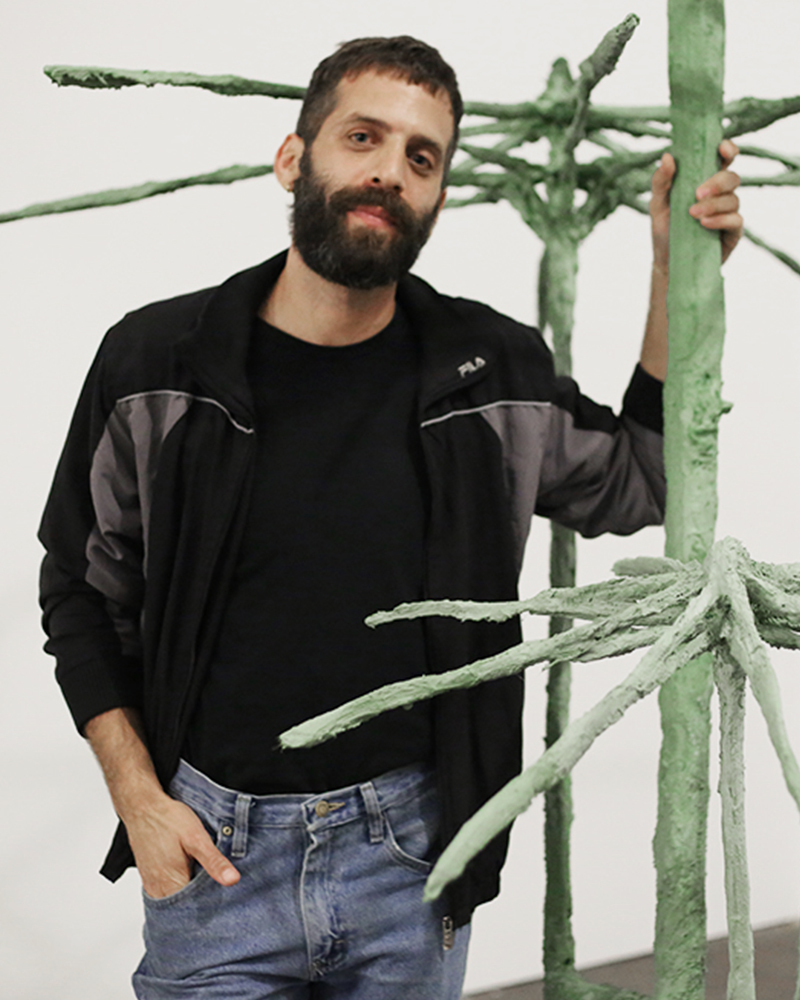Side Gallery
Side Gallery
WishlistFollow
Follow
OREN PINHASSI AT AORA SPACE
OREN PINHASSI
AORA SPACE
2021
'The Crowd' is a series of sculptures created by Oren Pinhassi, the finalist for AORA’s virtual open call. Responding to ‘bodies’ as a subject, the freestanding sculptures reveal the artist’s interest in espousing ambiguity through hybridity. Constructed with plaster and sand, the irregular surface and attenuated construction evoke an architectural motif while emphasizing a sense of anatomical tactility. The transfusion of these elements in singular entities represent how the systems that we’ve built such as language, data, and algorithms, engender isolation. Information, when transmitted rapidly and continuously, may hinder us from forming orderly and meaningful connections.




Oren Pinhassi (b.1985, Tel Aviv, Israel; lives and works in New York) graduated from the Yale School of Art in 2014. Recent solo shows include Castello San Basilio, Basilicata, 2019; Palazzo Monti, Brescia, 2019; One in the mouth and one in the heart at Skibum MacArthur, Los Angeles, 2018; Springs at the Petach Tikva Museum of Art, Israel, 2017; Nature Calls at RIBOT Gallery, Milan, 2017; Hanging Gardens at New Capital Projects, Chicago, 2016. Group exhibitions include For Mario at Tina Kim Gallery, New York, 2019; Four at Yossi Milo, New York, 2019; This Is Not A Prop at David Zwirner, New York, 2018. Completed residencies include Outset Contemporary Art Fund’s Bialik Residency, 2017, the Shandanken Project at Storm King Sculpture Park, New York, 2016 and the Skowhegan School of Painting and Sculpture, Maine, 2014. Pinhassi has been awarded numerous prizes including The Pollock-Krasner Foundation Grant, 2018; Fannie B. Pardee Prize, Yale School of Art, 2014; The Art Slant Prize, 2014; Shlomo Witkin Prize, 2011 and the Excellence Program Scholarship, Israeli Ministry of Education, 2011. Pinhassi lives and works in New York City.
Pinhassi’s installations examine the relationship between the human figure and the built environment by conjuring evocative sites that intersect public and private exchange. Past works explored bathhouses as spaces of vulnerability and sensuality, or cruising spots in nature as voyeuristic portals to erotic transformation. The sculptures in The Crowd invoke architectures of authority, incorporating features of manmade spaces designed to exert power over individuals within them. Quotations from civic institutions are equally abundant – voting booths, segregation cells, institutional desks. Points of bureaucratic exchange become expressions of bodily desire, as teller windows imply receptive orifices.
Pinhassi’s primary materials are plaster and sand, methodically layered over welded steel skeletons. The visual sensibility created by both medium and application is one of constructive ambiguity – the tactile surface announces itself as handmade, yet the predominantly grey colour and repetition of form across the group of sculptures evokes a spectre of concrete modernism that is instantaneously disavowed by their voluptuous sensuality, urging us towards a logic of futuristic hybridity. Standing in contrast to the more architectural works are several comparatively humanoid figures, if only for their suggestive pastel pink colouring that guides us towards the interior space of the body.